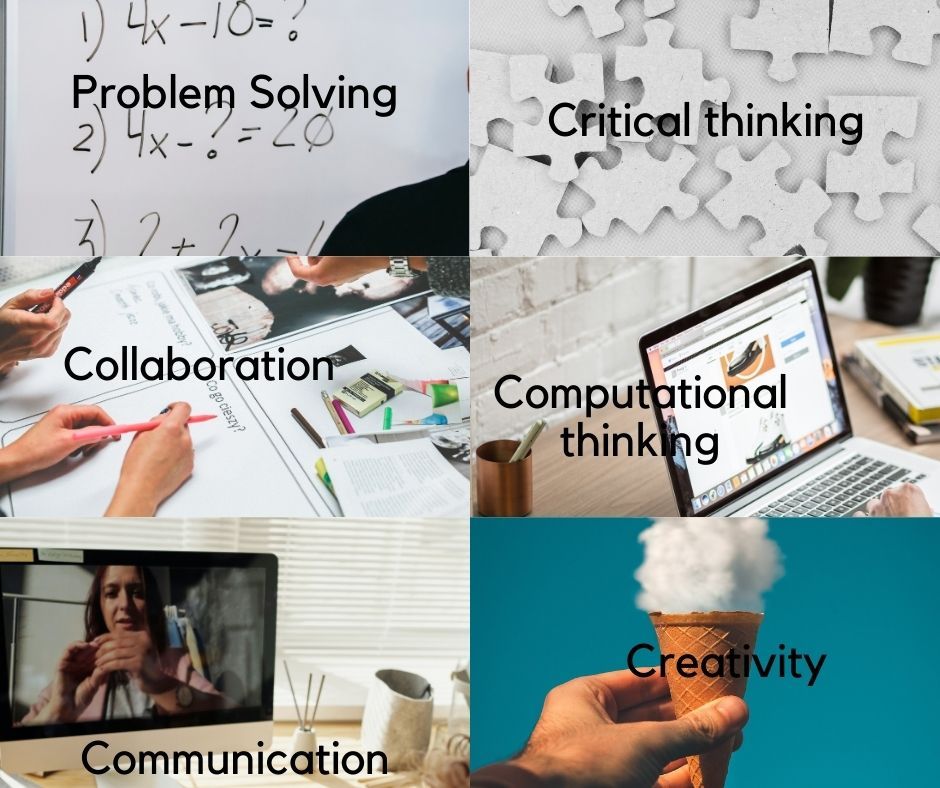Any learning ecosystem is of knowledge creators and knowledge constructors. Before we delve into the specifics of coding & robotics let us see a broader picture of integrated use of STEAM education to design solutions. The STEAM learning ecosystem consists of five element: Science, Technology, Engineering, Art and Math.

The Science element represents the scientific principles that are used/ applied in problem solving.
The Technologies are to interact, measure record, analyse, synthesise and present data.
The Engineering element represents two subs - design thinking and a process to arrive at possible solutions.
The Art element represents the aesthetic aspects though an element of Design Thinking is interlinked.
The Math concepts are used as a tool to calculate, express and analyse data.
Now let’s try to see skills that would fall into Coding & Robotics for kids learning. Individually, Coding or Robotics help build skills such as problem solving, critical thinking, collaboration, communication, creativity and computational thinking. Though the landscape to work and execute could be different.

Coding is a set of written instructions for a computer or robot to read and execute. Based on the problem the physical robot will perform a task. This allows one to see their thinking & the prototype into an action. The action is only possible when the code is correct. The skills such as creativity come through inherent skills such as perseverance that could consist of trial and error or repetitive tasks. While the robot comes to motion it could create joy and fun in the minds of kids. This would encourage one to try complex problems. Communication skills are demonstrated during the design/engineering thinking process, and during showcase of the motion robot and as well through presentation to peers in classroom or online. Because of interdisciplinary nature and motion connect factor for Robotics projects could be an attractive proposition for kids. However, coding is part of robotics. This scenario would make coding dependent on nature of project. In isolation coding could be fun to build any apps and games. Understanding this framework, QtPi has designed a DESI model. Where "D" stands for design; "E" stands for Electronics; "S" stands for software/coding and "I" stands for integration. Each robotic project has these four component to keep kids interested in coding and robotics or just coding with Genie Platform.
Benefits of Interdisciplinary* such as Coding & Robotics Learning
- Real Life Learning
- Increased Cognitive Gains
- Critical Thinking and Problem Solving
- Student-Centric
- Opens doors for students to develop interest in a variety of content areas
- Highlights learner strength
- Highly engaging
*Jackie Gestein
(To be edited further)